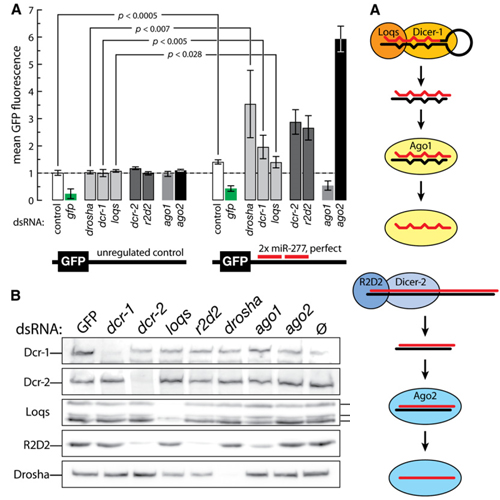Drosophilia microRNAs Are Sorted into Functionally Distinct Argonaute Complexes after Production by Dicer-1
27-Jul-2007
Cell, 2007, 130, 287-97 published on 27.07.2007
online article
Small interfering RNAs (siRNAs) and microRNAs (miRNAs) guide distinct classes of RNA-induced silencing complexes (RICSs) to repress mRNA expression in biological processes ranging from development to antiviral defense. In Drosophilia, separate but conceptually similar endonucleolytic pathways produce siRNAs and miRNAs. Here, we show that despite their distinct biogenesis, double-stranded miRNAs and siRNAs participate in a common sorting step that partitions them into Ago1- or Ago2-containing effector complexes. These distinct complexes silence their target RNAs by different mechanisms. miRNAs-loaded Ago2-RISC mediates RNAi, but only Ago1 is able to repress an mRNA with central mismatches in its miRNA-binding sites. Conversely, Ago1 cannot mediate RNAi, because it is an inefficient nuclease whose catalytic rate is limited by the dissociation of its reaction products. Thus, the two members of the Drosophila Ago subclade of Argonaute proteins are functionally specialized, but specific small RNA classes are not restricted to associate with Ago1 or Ago2.











